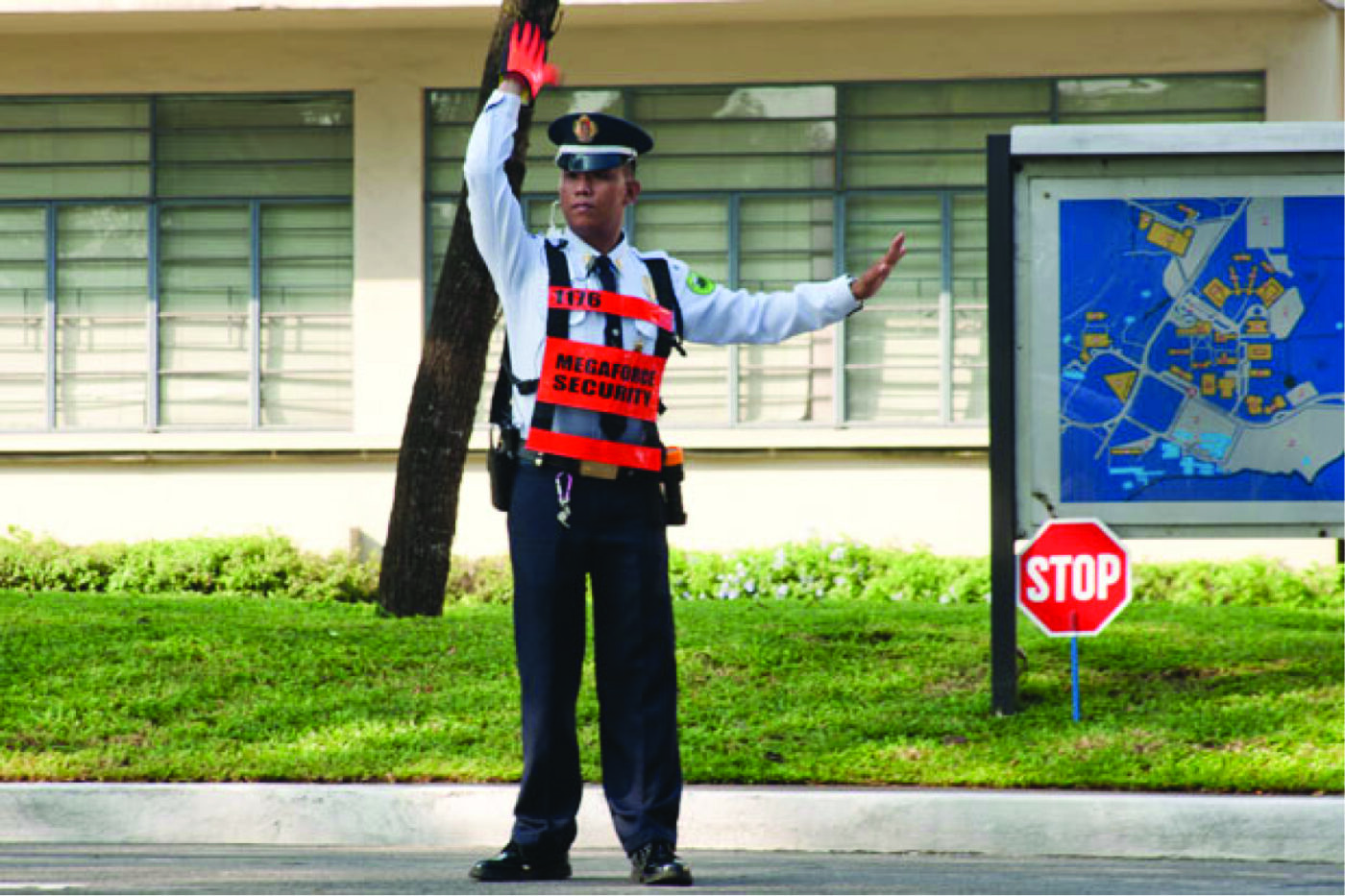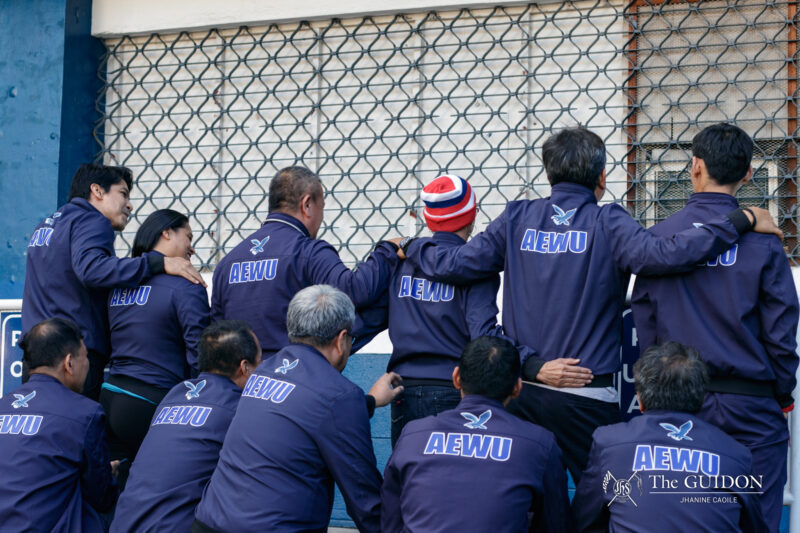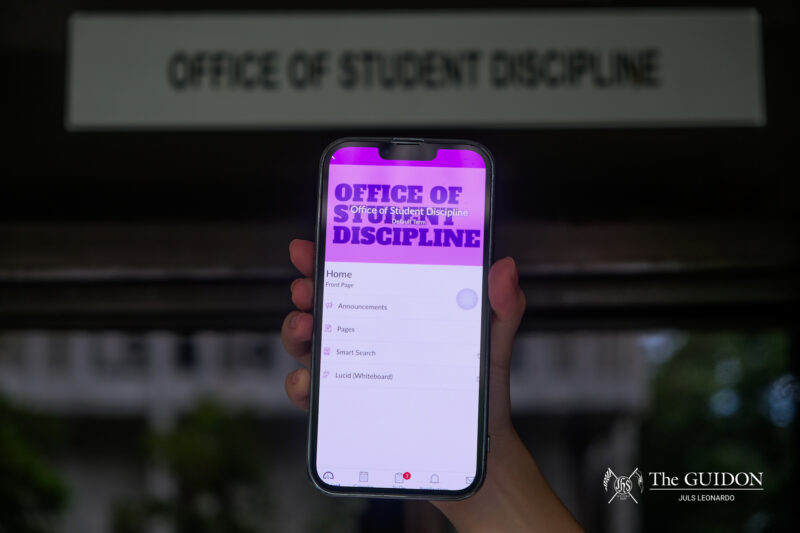A YEAR since its implementation, the Ateneo Traffic Group’s (ATG) one-way traffic scheme is still eliciting mixed reactions from the members of the Ateneo community.
The ATG was mandated by University President Jose Ramon Villarin, SJ on January 13, 2012 to review the university’s policies and systems on traffic management in response to the anticipation of traffic problems along Katipunan Avenue.
The ATG members are the following: Environmental Science Department Instructor Abigail Favis, Executive Director of the Ateneo Center for Organization Research and Development Edna Franco, PhD, Sociology and Anthropology Department Associate Professor and Institute of Philippine Culture Director Czarina Saloma-Akpedonu, PhD and Information Systems and Computer Science Department Associate Professor Kardi Teknomo, PhD. Former Facilities Management Office Director Arnulfo Batac was also a member of this team during his stay in the Ateneo.
The one-way traffic scheme was presented by the ATG to address the transportation problems within the campus.
Villarin endorsed the traffic plan in a memorandum released on January 18, 2013. The scheme was implemented on February 11 of the same year.
The memo said that the change was meant to improve mobility inside the campus and to help achieve the goal of having a “sustainable campus.”
The Facilities Management Office, led by Officer-In-Charge Victoria Dimalanta, currently oversees the implementation of the one-way scheme.
Scheme assessment
Security guard Andrei La Rua of Megaforce Integrated Security Agency said that the one-way scheme greatly helped in easing the flow of traffic in the Ateneo.
La Rua has been working in the Ateneo for three years and is stationed by the road alongside Gonzaga Hall.
However, other members of the Ateneo community think the traffic plan has its weaknesses.
Freshman Rafa Salud said that he finds it time-consuming when a vehicle needs to circle the entire campus should a driver miss his or her intended destination.
He also said the scheme does not properly solve the congestion of cars that occurs when the Ateneo Grade School and the Ateneo High School students are dismissed.
English Department Instructor Michelle Paterno observed that, because the on-campus roads are free during non-peak hours, many cars do not follow the speed limit.
“While I have not really heard of accidents happening on campus, I would be concerned about speeding cars, especially given our many pedestrians,” she said.
ATG member Favis acknowledged the complaints regarding the scheme. “Of course it’s not the perfect solution for everybody. But based on the data that we gathered, this is the best scheme for the majority.”
As of press time, the ATG has yet to conduct a secondary monitoring of the effects of the one-way traffic scheme.
Behind the scheme
Favis explained the ATG’s rationale for recommending the one-way traffic plan.
She elaborated that the ideas behind the scheme include doubling the road capacity, reducing the number of intersections and enabling the fast entry and exit of vehicles in the campus.
“[The one-way traffic scheme] was a very important step into a bigger sustainable mobility plan for the university,” she said.
ATG member Teknomo clarified that the one-way scheme will not completely solve the campus traffic problem. It is only one the ATG’s 30 integrated action plans.
These solutions include the following: Improving pedestrian, bicycle and public transportation facilities, opening new gates and bridges between Miriam College and the Ateneo and the implementation of staggered school schedules.
According to Favis, unless the problem with regard to the flow of vehicles in the Ateneo and Katipunan Avenue will be fixed, it would be inefficient to add any other interventions to the traffic flow.
Future plans
Favis said that the ATG is still looking for ways to improve mobility inside the campus, emphasizing that their priority is to ensure the safety of pedestrians inside the Ateneo.
Currently, the ATG is trying to determine how to improve the electronic shuttle services on campus in order to lessen the need for private vehicles.
Favis added the ATG is also reviewing the problems of the one-way traffic system, which include intersections and risks to pedestrians.







